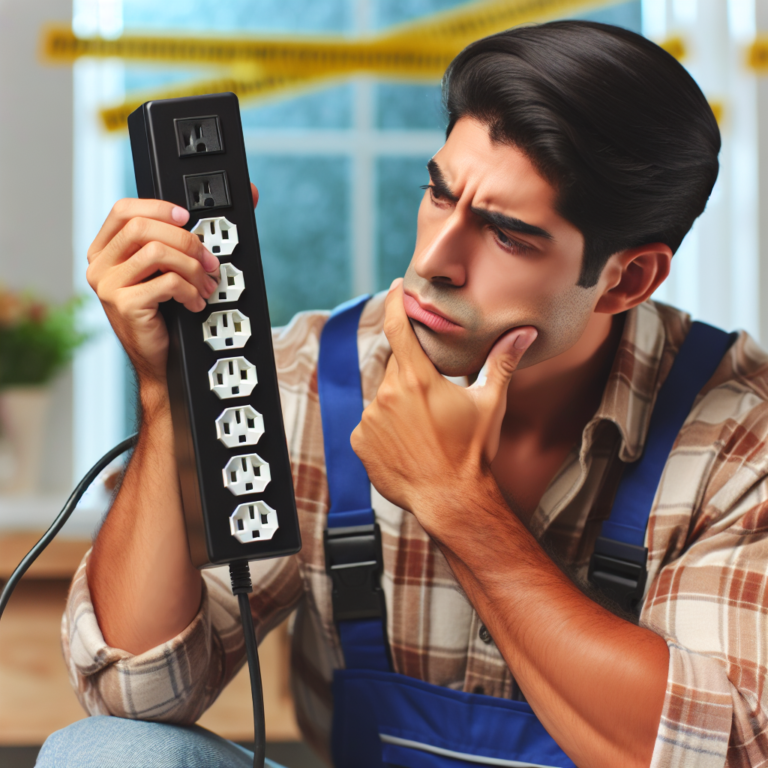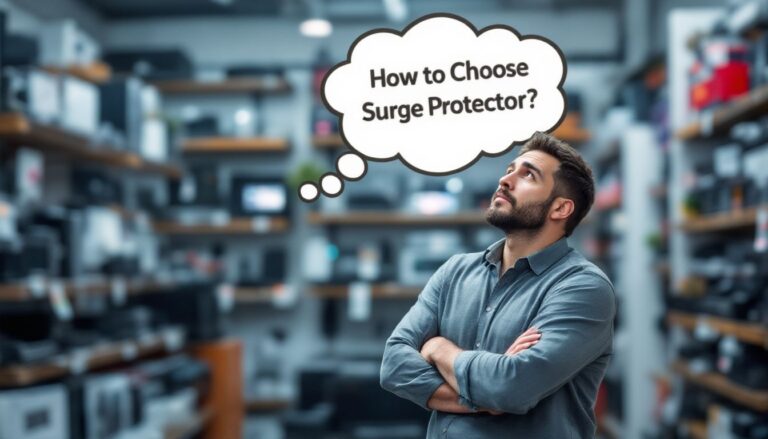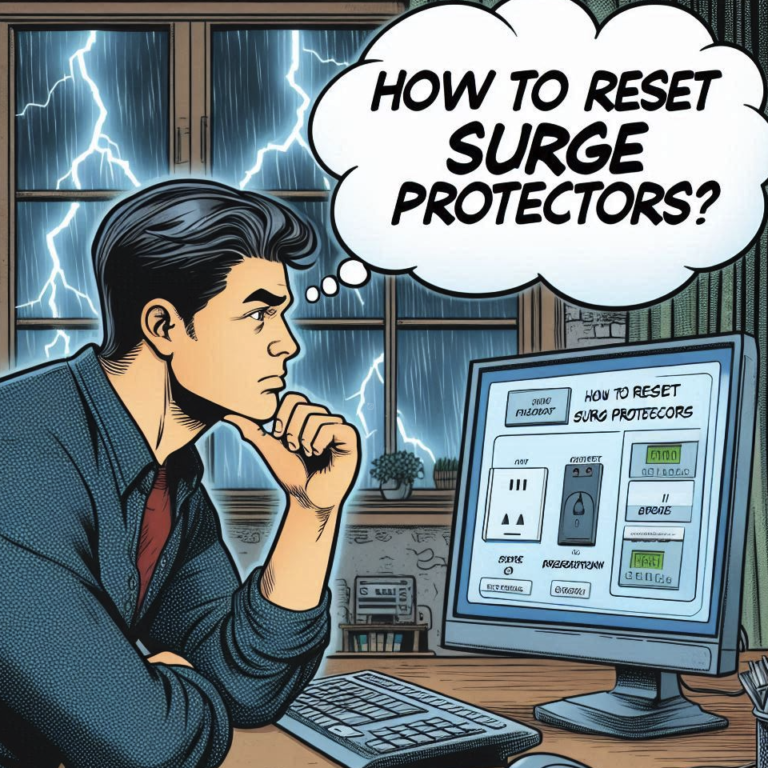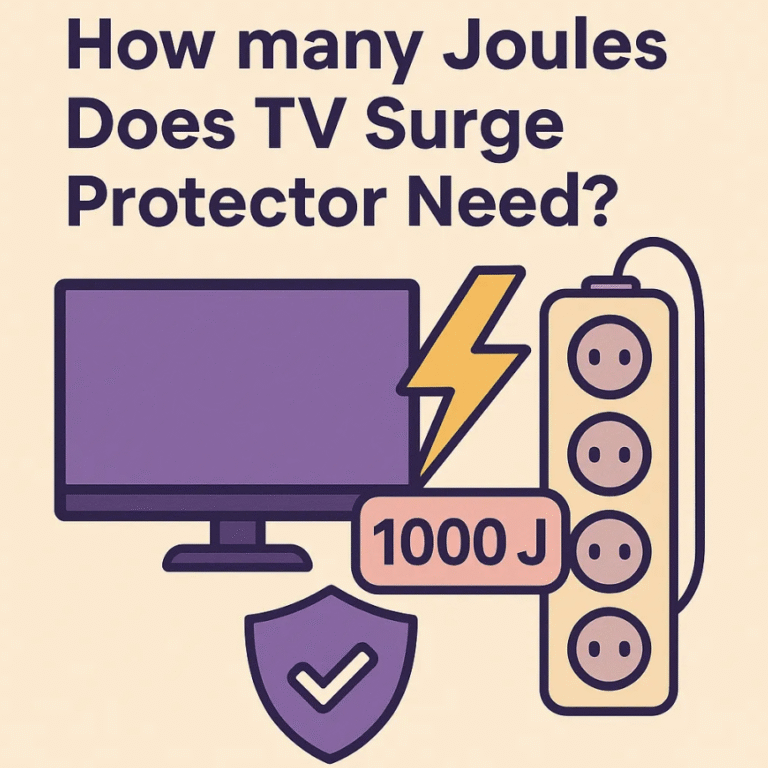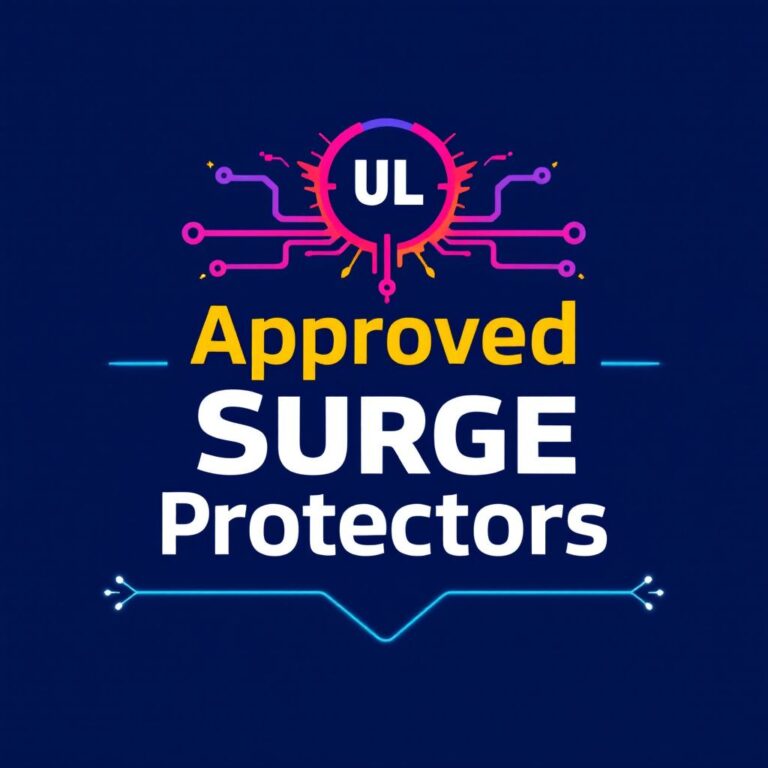How to Choose the Right Surge Protection for Commercial Buildings
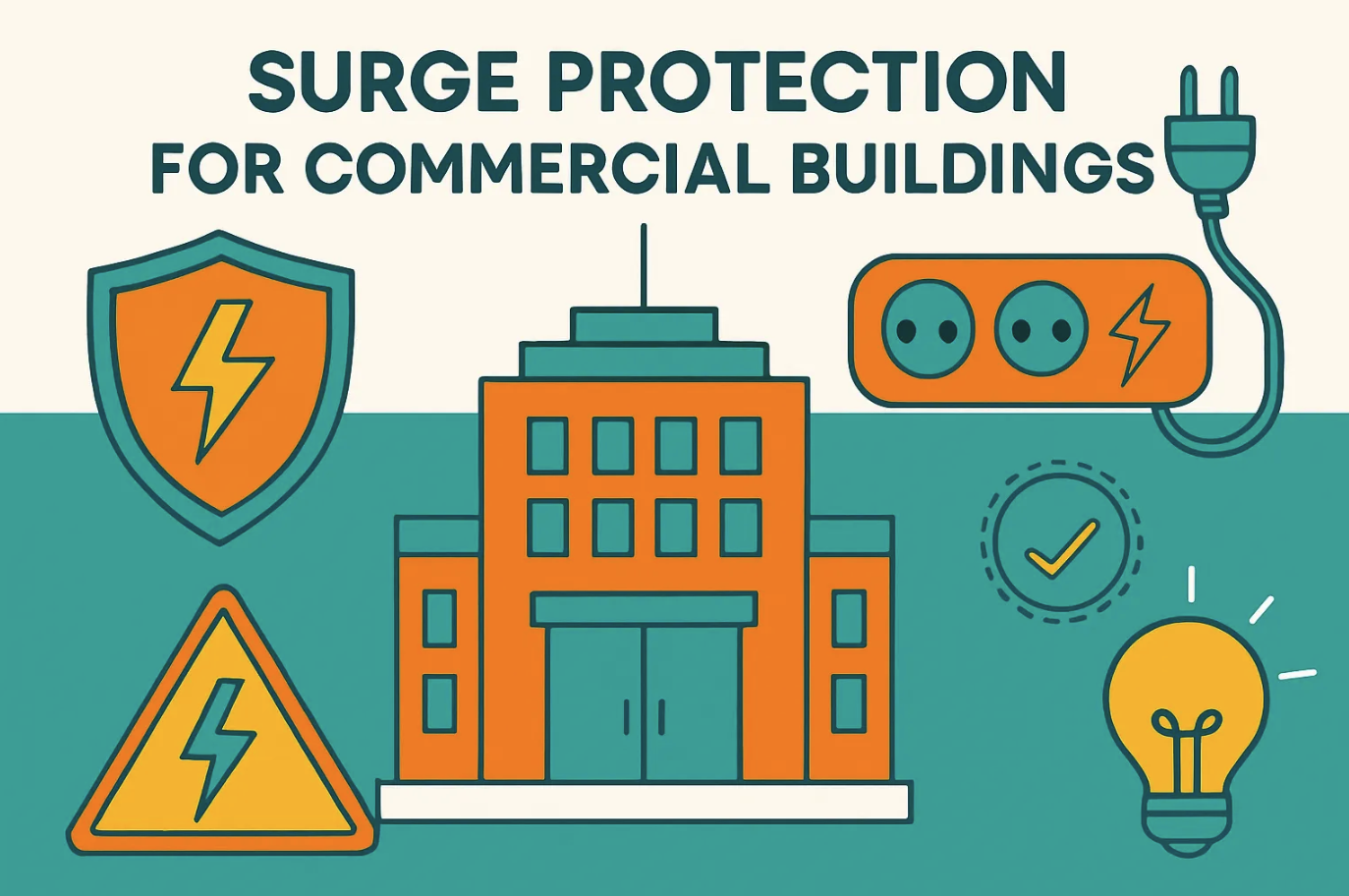
Power surges can significantly threaten commercial buildings, often causing detrimental and costly damage to electrical systems and equipment. Storware estimates that these electrical issues result in $188 billion annually in expenses related to downtime, repairs, and replacements. Surprisingly, up to 80% of power surges originate within the building, triggered by high-powered devices.
Effective surge protection is essential to safeguard operations and prevent disruptions. Choosing the right surge protection for commercial buildings ensures the longevity of critical systems, minimizes risks, and protects valuable investments.
What Is a Power Surge and Why Does It Matter?
Definition of a Power Surge
A power surge refers to a sudden and brief spike in electrical voltage that exceeds the standard level of 120 volts in most commercial buildings. These surges can last only a fraction of a second, but their impact can be significant. Electrical systems and devices are designed to operate within a specific voltage range. When a surge occurs, the excess voltage can overwhelm these systems, leading to potential damage or failure.
Power surges are not limited to external sources like lightning strikes. Studies reveal that up to 80% of surges originate within the building. These internal surges often result from operating high-powered equipment, such as HVAC systems or industrial machinery, which create sudden fluctuations in electrical demand.
Common Causes of Power Surges in Commercial Buildings
Several factors contribute to power surges in commercial environments. Understanding these causes can help businesses take proactive measures to mitigate risks:
-
Lightning Strikes: Although rare, lightning can send tens of thousands of volts through power lines, causing severe surges.
-
Electrical Overload: When too many devices draw power from a single circuit, it can lead to an overload, triggering a surge.
-
Faulty Wiring: Poorly installed or aging wiring increases the likelihood of voltage spikes.
-
Utility Power Issues: Brownouts, blackouts, and power restoration after outages often result in surges.
-
Short Circuits: Electrical faults, such as short circuits, can cause sudden voltage increases.
-
On/Off Cycling of Equipment: Large appliances or machinery switching on and off can create internal surges.
These causes highlight the complexity of managing electrical systems in commercial buildings. Each source poses unique challenges, requiring tailored solutions to ensure adequate protection.
Risks of Power Surges to Electrical Systems and Equipment
The consequences of power surges extend beyond immediate equipment damage. They can disrupt operations, compromise safety, and lead to significant financial losses. Below are some of the key risks:
-
Damage to Equipment: Surges can destroy sensitive computer, server, and industrial machinery components. Replacing or repairing these items often incurs high costs.
-
Operational Downtime: When critical systems fail, businesses may experience interruptions in productivity, leading to revenue loss.
-
Data Loss: Surges affecting IT infrastructure can result in corrupted or lost data, impacting business continuity.
-
Fire Hazards: Faulty wiring combined with surges increases the risk of electrical fires, endangering property and lives.
Protecting against these risks requires a comprehensive approach to surge protection. Businesses must evaluate their electrical systems, identify vulnerabilities, and implement appropriate safeguards to minimize potential damage.
Types of Surge Protection for Commercial Buildings
Effective surge protection requires selecting the correct device to address specific vulnerabilities in a commercial building. Each type of surge protection offers unique benefits and is designed to safeguard electrical systems and equipment from power surges.
Whole Building Surge Protection Systems
Whole building surge protection systems provide comprehensive coverage by safeguarding the entire electrical infrastructure. These systems are typically installed at the main electrical panel or service entrance, where they intercept surges before they reach sensitive equipment. They are particularly effective against external surges caused by lightning strikes or utility power issues.
Key Features of Whole Building Surge Protection Systems:
-
Protects all connected devices and circuits downstream.
-
Reduces the risk of damage to critical systems like HVAC units, lighting, and industrial machinery.
-
Often includes indicators to signal when the device needs replacement.
Hard-wired surge protection devices are a common choice for whole-building systems. These devices absorb excess energy from voltage spikes, ensuring reliable operations and extending the lifespan of electrical equipment. For commercial buildings with high-powered equipment, whole building surge protection is the first line of defense against major surges.
Point-of-Use Surge Protectors
Point-of-use surge protectors focus on safeguarding individual devices or specific outlets. These protectors are ideal for sensitive equipment such as computers, servers, and medical devices. Unlike whole-building systems, point-of-use protectors are installed directly at the outlet where the device is plugged in.
Advantages of Point-of-Use Surge Protectors:
-
Provides targeted protection for high-value or sensitive equipment.
-
Easy to install and replace as needed.
-
Often includes features like USB ports and status indicators.
Combining point-of-use protectors with whole building systems creates a layered defense strategy. This approach minimizes the risk of damage from both large-scale surges and smaller, localized spikes. Businesses can use this combination to protect critical assets while maintaining operational continuity.
Network and Data Line Surge Protection
Power surges do not only affect electrical systems; they can also disrupt communication networks and data lines. Network and data line surge protection devices are specifically designed to shield these systems from voltage spikes.
These devices protect IT infrastructure, including routers, switches, and telephone systems.
Benefits of Network and Data Line Surge Protection:
-
Prevents data loss and corruption caused by surges.
-
Ensures uninterrupted communication and connectivity.
-
Protects against surges traveling through Ethernet, coaxial, or telephone lines.
For commercial buildings relying on extensive IT systems, network and data line surge protection is critical to their overall strategy. These devices help maintain business continuity by safeguarding the flow of information and preventing costly downtime.
Comparing the Effectiveness of Different Surge Protection Types
Selecting the right surge protection type depends on the specific needs of a commercial building. Each type offers unique advantages and serves distinct purposes. Comparing their effectiveness helps businesses make informed decisions to safeguard their electrical systems and equipment.
Whole Building Surge Protection Systems
Whole building surge protection systems provide broad coverage by intercepting surges at the main electrical panel or service entrance. These systems excel at protecting against external surges, such as those caused by lightning strikes or utility power fluctuations.
They shield all downstream devices and circuits, ensuring comprehensive protection for critical systems like HVAC units, lighting, and industrial machinery.
Advantages of Whole Building Systems:
-
Protects the entire electrical infrastructure.
-
Reduces the risk of widespread damage during major power surges
-
Includes indicators to signal when replacement is necessary.
However, whole building systems may not address smaller, localized surges originating within the building. Pairing them with additional protection ensures a more robust defense.
Point-of-Use Surge Protectors
Point-of-use surge protectors focus on safeguarding individual devices or outlets. These protectors are ideal for sensitive equipment, such as computers, servers, and medical devices. They absorb excess energy directly at the outlet, preventing damage to connected devices.
Key Benefits of Point-of-Use Protectors:
-
Offers targeted protection for high-value equipment.
-
Easy to install and replace.
-
Often includes features like USB ports and status indicators.
While effective for specific devices, point-of-use protectors cannot shield the entire building. Combining them with whole building systems creates a layered approach, addressing large-scale and localized surges.
Network and Data Line Surge Protection
Network and data line surge protection devices safeguard communication systems and IT infrastructure. These devices prevent voltage spikes from disrupting routers, switches, and telephone systems. They are essential for businesses relying on uninterrupted connectivity and data integrity.
Why Network and Data Line Protection Matters:
-
Shields against surges traveling through Ethernet, coaxial, or telephone lines.
-
Prevents data loss and corruption.
-
Ensures continuous communication and operational efficiency.
This type of protection complements electrical surge devices, offering a complete solution for modern commercial buildings.
Hard-Wired Surge Protection Devices
Hard-wired surge protection devices integrate directly into power lines, providing durable and reliable protection. These devices are suitable for commercial applications, including lighting circuits, motor controllers, and power distribution systems. They absorb excess energy from transients and surges, ensuring consistent performance.
Features of Hard-Wired Devices:
-
Protects downstream devices and outlets.
-
Ensures reliable operations for connected systems.
-
Suitable for high-powered equipment in industrial settings.
Hard-wired devices serve as a convenient solution for businesses seeking long-term protection for critical systems.
Summary of Effectiveness
|
Surge Protection Type |
Coverage |
Best For |
Limitations |
|---|---|---|---|
|
Whole Building Systems |
Entire electrical infrastructure |
External surges (e.g., lightning) |
Limited protection for internal surges |
|
Individual devices or outlets |
Sensitive equipment (e.g., computers) |
Does not protect the entire building |
|
|
Network and Data Line Protection |
Communication systems |
IT infrastructure and data integrity |
Limited to network-related surges |
|
Power lines and circuits |
Industrial and high-powered equipment |
Requires professional installation |
Combining these surge protection types ensures maximum effectiveness. A layered approach addresses vulnerabilities at every level, safeguarding both the building and its critical systems.
Businesses should evaluate their specific needs to implement the most suitable solutions.
How to Evaluate Your Commercial Building’s Surge Protection Needs
Evaluating the surge protection needs of a commercial building requires a systematic approach. Each building has unique characteristics, and understanding these factors ensures the implementation of effective solutions to protect against power surges.
Assessing the Size and Layout of Your Building
The size and layout of a commercial building play a critical role in determining the type and extent of surge protection required. Larger buildings with complex electrical systems often face higher risks due to the increased number of circuits and equipment. A detailed assessment of the building’s electrical infrastructure helps identify potential vulnerabilities.
-
Electrical Panel Locations: Identify the locations of main and sub-electrical panels. Surge protection devices (SPDs) installed at these points can shield the entire system from external and internal surges.
-
Wiring Lengths: Longer wiring increases the likelihood of voltage spikes. Buildings with extensive wiring networks may require additional SPDs to ensure comprehensive coverage.
-
Zoning and Equipment Distribution: Evaluate how equipment is distributed across different zones. Areas with high-powered machinery or sensitive electronics may need targeted protection.
For example, a multi-story office building with centralized IT systems and distributed HVAC units will benefit from a combination of whole-building surge protection and point-of-use devices. This layered approach ensures that both large-scale and localized surges are addressed effectively.
Identifying Critical Equipment and Systems
Not all equipment within a commercial building holds the same level of importance. Identifying critical systems ensures that surge protection efforts focus on safeguarding the most valuable assets.
-
IT Infrastructure: Servers, routers, and data storage systems are highly sensitive to voltage fluctuations. Network and data line surge protection devices are essential for maintaining uninterrupted operations.
-
Industrial Machinery: High-powered equipment, such as manufacturing machines or HVAC systems, often generates internal surges. Whole-building surge protection systems can mitigate these risks.
-
Medical or Specialized Equipment: In facilities like hospitals or research labs, sensitive devices require point-of-use surge protectors to prevent damage and ensure accuracy.
A prioritized list of critical systems allows businesses to allocate resources effectively. For instance, protecting IT infrastructure with network surge protection ensures data integrity and operational continuity, while safeguarding industrial machinery reduces downtime and repair costs.
Considering Environmental and Operational Risk Factors
Environmental and operational factors significantly influence the likelihood and severity of power surges. Understanding these risks helps tailor surge protection strategies to the specific needs of a commercial building.
-
Lightning-Prone Areas: Buildings located in regions with frequent thunderstorms face a higher risk of external surges. Whole-building surge protection systems with high amp ratings (20,000–40,000 amps) provide robust defense against lightning-induced spikes.
-
Aging Electrical Systems: Older buildings with outdated wiring or electrical components are more susceptible to surges. Upgrading to modern SPDs ensures compliance with current safety standards and enhances protection.
-
Operational Demands: Facilities with heavy machinery or fluctuating power demands generate internal surges. Installing hard-wired surge protection devices at key points minimizes the impact of these fluctuations.
For example, a manufacturing plant operating in a lightning-prone area should combine whole-building surge protection with hard-wired devices for industrial equipment. This strategy addresses both external and internal surge risks, ensuring reliable operations.
Steps to Implement the Right Surge Protection
Implementing the right surge protection for commercial buildings requires a structured approach. Each step ensures that electrical systems and equipment remain safeguarded against potential power surges.
Following these steps helps businesses protect their investments and maintain operational continuity.
Conducting a Professional Electrical Assessment
A professional electrical assessment serves as the foundation for effective surge protection. Licensed electricians evaluate the building’s electrical infrastructure to identify vulnerabilities and risks. This process includes inspecting wiring, electrical panels, and existing surge protection devices.
Key aspects of the assessment include:
-
Identifying Weak Points: Professionals locate areas prone to surges, such as outdated wiring or overloaded circuits.
-
Evaluating Equipment Needs: Critical systems like HVAC units, IT infrastructure, and industrial machinery receive special attention.
-
Recommending Solutions: Based on the findings, electricians suggest appropriate surge protection strategies tailored to the building’s requirements.
This step ensures that businesses understand their specific risks and can implement targeted solutions to protect against power surges effectively.
Installing Whole Building Surge Protection Devices
Whole building surge protection devices act as the first line of defense. These devices are installed at the main electrical panel or service entrance, intercepting surges before they reach downstream systems. They are particularly effective against external surges caused by lightning strikes or utility power fluctuations.
Steps to install whole building surge protection include:
-
Selecting the Right Device: Choose a surge protection device rated for the building’s electrical load and risk factors.
-
Professional Installation: Licensed electricians integrate the device into the electrical panel to ensure proper functionality.
-
Testing and Verification: After installation, the device undergoes testing to confirm its effectiveness.
Whole building surge protection provides comprehensive coverage, safeguarding all connected circuits and equipment. It minimizes the risk of widespread damage during major surges.
Adding Point-of-Use Surge Protectors for Sensitive Equipment
Point-of-use surge protection complements whole building systems by targeting individual devices. These protectors are installed directly at outlets to shield sensitive equipment, such as computers, servers, and medical devices, from localized surges.
Steps to implement point-of-use surge protection include:
-
Identifying Critical Devices: Determine which equipment requires additional protection based on its value and sensitivity.
-
Choosing Suitable Protectors: Select point-of-use surge protectors with appropriate voltage ratings and features like status indicators.
-
Installing and Testing: Plug the protectors into outlets and connect the devices. Test the setup to ensure proper operation.
Combining point-of-use surge protection with whole building systems creates a layered defense strategy. This approach addresses both large-scale and localized surges, ensuring maximum protection for critical assets.
Protecting Communication and Data Lines
Communication and data lines are critical components of modern commercial buildings. These systems, including Ethernet cables, telephone lines, and coaxial connections, often carry sensitive information and support essential operations. Power surges traveling through these lines can disrupt connectivity, corrupt data, and damage equipment.
Implementing surge protection for communication and data lines ensures uninterrupted operations and safeguards valuable assets.
Key Steps to Protect Communication and Data Lines:
-
Install Data Line Surge Protection Devices
Specialized surge protection devices designed for communication and data lines prevent voltage spikes from damaging IT infrastructure. These devices intercept surges before they reach routers, switches, or other connected equipment. Businesses should select devices compatible with their specific network configurations, such as Ethernet or coaxial cables. -
Shield Critical IT Infrastructure
Protecting servers, data storage systems, and networking equipment is essential. Network surge protectors act as a barrier, ensuring that surges do not compromise sensitive systems. This step is particularly important for businesses relying on cloud-based services or extensive data processing. -
Ground Communication Lines Properly
Proper grounding of communication lines reduces the risk of surges traveling through these pathways. Grounding dissipates excess energy safely, minimizing the impact on connected devices. Regular inspections ensure that grounding systems remain effective over time. -
Combine with Whole Building Surge Protection
Integrating communication line protection with whole building surge protection creates a comprehensive defense. While whole building systems address electrical surges, data line protectors focus on safeguarding communication pathways. This layered approach enhances overall reliability.
Protecting communication and data lines prevents equipment damage and ensures business continuity. For example, a disrupted telephone system in a customer service center can lead to lost revenue and reduced customer satisfaction. Investing in robust surge protection for these systems minimizes such risks.
Scheduling Regular Maintenance and Testing
Network and data line surge protection devices and testing to remain effective. Over time, components may degrade or fail, reducing their ability to shield electrical systems and equipment from power surges. Scheduling routine inspections ensures that all devices function optimally and provides an opportunity to address potential issues before they escalate.
Benefits of Regular Maintenance and Testing:
-
Ensures System Reliability
Regular testing verifies that surge protection devices perform as intended. Electricians use specialized tools to measure the effectiveness of installed systems, ensuring they meet safety standards. -
Identifies Wear and Tear
Surge protection devices, especially those exposed to frequent surges, can wear out over time. Maintenance checks identify worn components, allowing for timely replacements. For instance, whole building surge protectors often include indicators that signal when replacement is necessary. -
Prevents Unexpected Failures
Routine inspections reduce the likelihood of unexpected system failures. Businesses can avoid costly downtime and equipment damage by addressing issues proactively.
Steps to Schedule Maintenance and Testing:
-
Create a Maintenance Schedule
Establish a regular schedule for inspecting surge protection systems. Quarterly or biannual checks are common for commercial buildings, depending on the frequency of power surges in the area. -
Hire Licensed Professionals
Engage qualified electricians to conduct maintenance and testing. Professionals have the expertise to assess system performance and recommend improvements. -
Document Inspection Results
Maintain detailed records of all maintenance activities. Documentation helps track the condition of surge protection devices and ensures compliance with safety regulations. -
Upgrade Outdated Systems
During inspections, identify outdated or underperforming devices. Upgrading to modern surge protection systems enhances overall safety and efficiency.
Regular maintenance and testing extend the lifespan of surge protection systems and provide peace of mind. Businesses that prioritize these activities can confidently rely on their electrical infrastructure to support operations without interruptions.
Upgrading Surge Protection in Older Commercial Buildings
Identifying Outdated Surge Protection Systems
Older commercial buildings often rely on outdated surge protection systems that fail to meet modern safety and performance standards. These systems may lack the capacity to handle the increasing electrical demands of today’s technology-driven environments. Identifying these vulnerabilities is the first step toward ensuring reliable protection.
Signs of outdated surge protection systems include:
-
Frequent Equipment Failures: Repeated breakdowns of electrical devices may indicate insufficient surge protection.
-
Absence of Whole Building Protection: Many older buildings lack comprehensive systems installed at the main electrical panel.
-
Worn or Degraded Components: Devices with visible wear, such as discoloration or damaged wiring, may no longer function effectively.
-
Non-Compliant Devices: Surge protection systems installed decades ago may not comply with current safety regulations or industry standards.
A professional electrical assessment can uncover these issues. Licensed electricians evaluate the building’s infrastructure, inspecting wiring, panels, and existing surge protection devices. This process helps pinpoint weaknesses and provides a roadmap for necessary upgrades.
Benefits of Modern Surge Protection Devices
Modern surge protection devices (SPDs) offer advanced features that significantly enhance the safety and efficiency of commercial buildings. Upgrading to these systems provides several key benefits:
-
Enhanced Protection for Sensitive Equipment
Modern SPDs shield high-value electronics, such as servers, computers, and industrial machinery, from voltage spikes. This protection reduces the risk of costly repairs and replacements. For instance, businesses in the United States spend an average of $1,767 annually on new electronic products. Effective surge protection extends the lifespan of these investments. -
Improved Operational Continuity
Power surges often lead to downtime, disrupting business operations. Modern devices minimize these interruptions by absorbing excess voltage before it reaches critical systems. This ensures that essential equipment, such as HVAC units and IT infrastructure, remains functional during electrical disturbances. -
Compliance with Safety Standards
Upgraded SPDs meet current industry standards, ensuring compliance with regulations. This reduces liability risks and enhances the overall safety of the building’s electrical system. -
Cost Savings Over Time
While modern surge protection systems involve upfront costs, they deliver long-term savings. A comprehensive system typically costs less than $1,000, yet it prevents damage to expensive equipment and reduces downtime-related expenses. Businesses save significantly by avoiding frequent repairs and replacements.
|
Feature |
Outdated Systems |
Modern Systems |
|---|---|---|
|
Protection Capacity |
Limited |
High capacity for large surges |
|
Compliance with Standards |
Often non-compliant |
Fully compliant |
|
Maintenance Requirements |
Frequent |
Minimal |
|
Cost Efficiency |
High long-term costs |
Significant long-term savings |
Upgrading to modern surge protection devices ensures that commercial buildings remain resilient against both internal and external power surges.
Steps to Upgrade to Current Standards
Transitioning to modern surge protection involves a systematic approach. Each step ensures that the building’s electrical infrastructure receives the necessary upgrades to handle today’s challenges.
-
Conduct a Comprehensive Assessment
Begin with a detailed evaluation of the building’s electrical system. Licensed electricians inspect existing surge protection devices, wiring, and panels. They identify outdated components and recommend suitable replacements. -
Install Whole Building Surge Protection
Whole building SPDs serve as the foundation of an upgraded system. These devices intercept surges at the main electrical panel, protecting all downstream circuits and equipment. Choose devices rated for the building’s electrical load and risk factors, such as lightning-prone areas or high-powered machinery. -
Add Point-of-Use Protectors
Complement whole building systems with point-of-use surge protectors. These devices safeguard sensitive equipment, such as computers and medical devices, from localized surges. Select protectors with appropriate voltage ratings and features like status indicators. -
Upgrade Communication and Data Line Protection
Modernize protection for communication systems, including Ethernet cables and telephone lines. Install data line surge protection devices to prevent voltage spikes from disrupting IT infrastructure and connectivity. -
Ensure Proper Grounding
Verify that the building’s grounding system meets current standards. Proper grounding safely dissipates excess energy, enhancing surge protection devices’ effectiveness. -
Schedule Regular Maintenance
Establish a maintenance schedule to inspect and test surge protection systems periodically. Routine checks ensure that devices remain functional and compliant with safety standards.
Upgrading surge protection in older commercial buildings safeguards valuable equipment and enhances operational reliability. Businesses that invest in modern systems protect their assets, reduce risks, and achieve long-term cost savings.
Surge protection plays a vital role in safeguarding commercial buildings from the costly consequences of power surges. Evaluating the building’s unique needs, installing appropriate devices, and maintaining them regularly ensures reliable protection for critical systems and equipment. Businesses should prioritize whole-building surge protection, complement it with point-of-use devices, and protect communication lines to create a robust defense.
Proactive measures, such as upgrading outdated systems and training staff, further enhance safety. Investing in effective surge protection prevents damage and ensures operational continuity and long-term cost savings.

